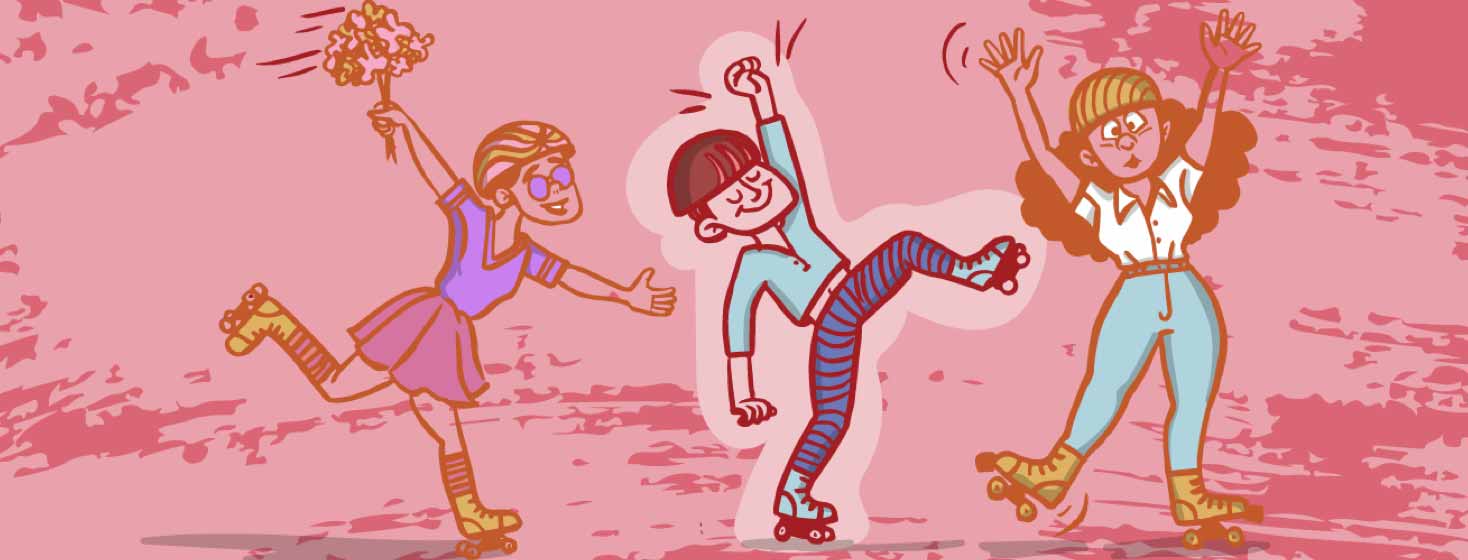Xanadu I or Don't I? A Rare Disease Roller Skating Odyssey
In the earliest days of the COVID-19 pandemic, my partner Gwenn and her friends decided to order roller skates and take a spin together around a cul-de-sac. It felt fun and safe when transmission concerns were high, and the days of gathering indoors seemed like distant memories. Gwenn asked if I wanted a pair of skates, too.
I politely declined.
Hesitation: When a bleeding disorder meets roller skates
Did it sound fun? Sure it did! But I had not gone roller skating since I was 11 – a solid three-plus decades away from the wheels. Having moderate hemophilia doesn't prevent me from doing most of what I want to. I could have said, "Yes!" and just taken my clotting factor beforehand.
But even then, I just pictured myself wiping out. I figured the ladies would have more fun without me tending to a minor bleed.
A second change: An invitation I could not refuse
Two years later, I got another invitation to roller skate. My niece's birthday party! Instead of balking at the idea of lacing up the skates, I decided to make a plan to give me the best odds of returning to the rink. Either way, I'd drink a slushy and have some laughs with the fam.
How is that not a win?
Preparing for a successful skate
Before heading to the skating rink, I took my clotting factor. Once I got there, my brother tightened up the wheels on my roller skates to provide more stability. My first challenge at the rink involved no skating at all: I just wanted to lace up the skates and stand in place. With plenty of things around me to hold on to, of course.
I gotta admit, I barely made it past this step. I'd have waved the white flag if I had not pre-gamed by boosting my clotting levels.
After 15 minutes or so, I got comfortable enough to embark on the next journey: skating from one table to the next. Roughly a 10-foot trek. I did that a few times before taking my limited skills to the rink.
Skating, falling, and getting back up
I skated the shortest length of the rink I could find between two exits, and I timed my odyssey during the points of least traffic. When the coast was relatively clear, I went for it! After a few little loops, I embarked on my first full orbit of the rink.
Which resulted in a fall.
Success? Heck yeah! The fall proved that I had the skills necessary to be back on the rink. You see, I had to fall because a four-year-old went down just ahead of me. I didn't have my turn radius dialed in yet, so the only way to avoid running over his little fingers was to bail out. "Thanks!" his mother said. I was going about two miles per hour, so no damage was incurred.
When I stood back up, I did so with confidence!
I completed that first lap with pride. Then I treated myself to a slushy before returning to the rink. With each lap, I got a little bit faster and a little bit better at navigating around potential situations. Roller skating always felt like a school of fish to me, swimming along in chaotic harmony.
Skating for mom and for me
I really wanted to give this skating thing a go because, recently, my mother passed to spirit. When she was a kid, she loved to roller skate. She was so tickled that her youngest granddaughter took a liking to something that brought her so much joy in her own youth. After her passing, I looked through some old photos of her skating. I was stunned by the resemblance to my niece.
As I skated around at my own pace, I saw my niece laughing and skating with her friends. I felt mom's presence, too. In my heart, I knew she'd laced up her favorite pair of old skates to join us, uninhibited by the body that had failed her over the last few years.
That party won't be the last time I skate with my family. Going in with the simple goal of trying my best – with no pressure of success or failure – was certainly the key. I had so much fun that I'm even ordering my own skates!

Join the conversation